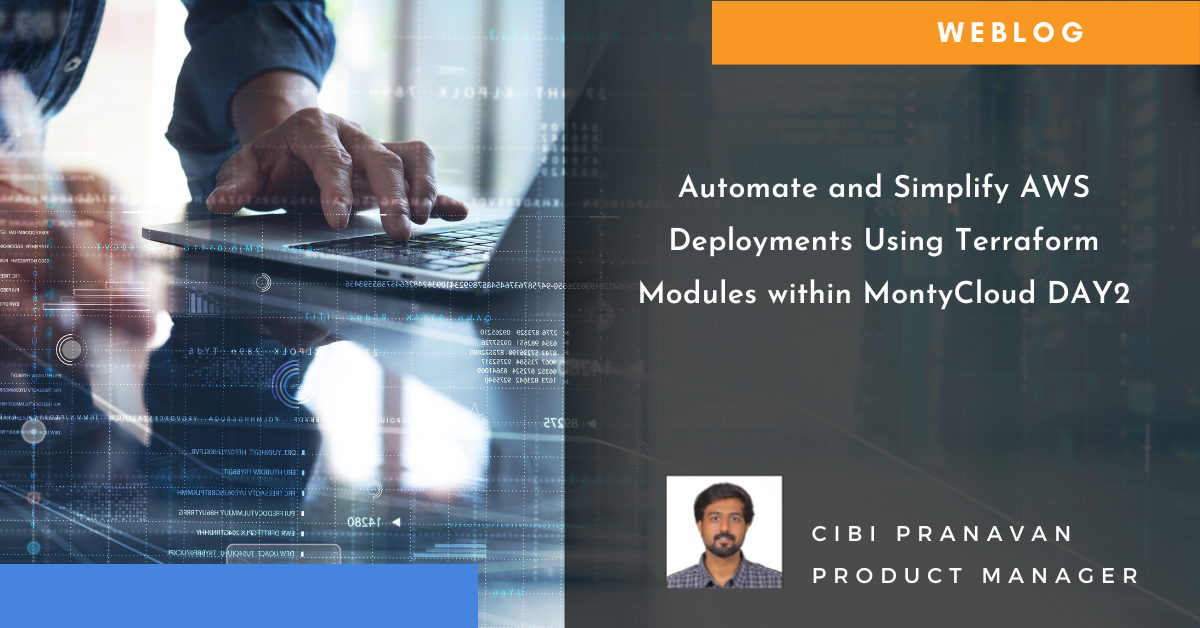MontyCloud DAY2 Automated Resource Tagging for AWS MAP
Have you signed an agreement to begin migrating to AWS? Or are you a Managed Service Provider (MSP) with an AWS Migration Competency delivering AWS...
Cloud is the undisputed winner in 2020. Cloud-powered applications made their way into every aspect of our day–to-day lives — enabling remote workforces, delivering classroom instructions to millions of young minds and bringing online shopping to groceries and take outs. These changes in how customers consume goods and services have implications far beyond COVID-19.
For businesses, 2020 was about experimenting how they can fit the cloud model to their business operations. However, digital transformations are not about just getting to the cloud. To truly benefit from the agility, scale, performance and cost efficiencies of their cloud investments, business leaders need to invest in their IT teams, tools and processes to fundamentally transform their IT operations to Cloud Operations (CloudOps). Successful IT teams will adopt DevOps best practices to Cloud Operations and collaborate with their DevOps and FinOps teams to shape both IT policies and investments.
As they plan for return to normalcy in the second half of 2021, many technology companies are giving their workers the flexibility to work from any location. Remote working is here to stay. In 2021, IT teams will have to plan to support more than half their users accessing their systems from outside the proverbial four walls. This means continuously evolving security and compliance policies, continuous monitoring and enforcement as well as continuous threat detection and remediation. In traditional data centers, security was a dedicated function. Security is a shared responsibility between the cloud platform vendor, the cloud IT teams as well as the departmental users. DevSecOps is an emerging function as CloudOps teams are being asked to take more responsibility for security. Successful IT teams will invest in tools and resources that help them automate security operations at scale.
Applications that drive virtual customer experiences such as payment systems, product catalogs and ordering systems moved quickly to the cloud as they are critical to maintaining business operations. However, many core applications still remain in private datacenters. Recently at AWS re:Invent the leaders estimated that 96% of customers workloads are still on-premise. IT teams will adopt tools and practices that help them consistently manage their server environments in hybrid environments. This can range from the routine such as server patch compliance policies to more complex tasks such as enforcing deployment configurations and configuration drifts.
Moving to the cloud does not automatically bring cost efficiencies. It only shifts the costs from a one-time capital expense to an operational expense that accrues over time. Cost overruns are inevitable as IT teams scale their applications in the cloud. Common reasons include lack of skills to make cost vs. performance trade-offs, over-provisioning and orphaned resources. As operations in the cloud become mainstream, IT leaders will start evaluating their cloud investments based on holistic models that include bandwidth, egress and people costs, among others. Traditional cloud cost–management and budgeting tools only help parse cloud infrastructure bills. IT leaders will invest in tools that enable them to make cost/performance trade-offs at a more granular application level.
Analysts forecast cloud service providers to grow to $257.84 billion by 2022 riding the wave of digital transformations. Efficient cloud operations require specialized skills. Cloud vendors provide a rich set of management interfaces. But these require skilled personnel to bring together and drive efficiency. Systems integrators and managed service providers can play a key role as aggregators of these skill sets and best practices.
Cloud best practices will continue to evolve in 2021. Unlike in traditional IT where decisions were centralized, cloud operations decisions require multi-disciplinary teams. Successful IT teams will be driven by cloud centers of excellence (CCoE), usually chaired by the CTO or CIO. CCoE also include infrastructure owners, application owners, business leads as well as representatives from finance and legal. CCoEs are instrumental in developing and enforcing operational best practices, budgets and vendor choices, while enabling departmental and application teams to become self-sufficient in driving day–to–day operations.
Businesses will accelerate their digital transformations in 2021. The complexity and breadth of the cloud environments can become overwhelming — even for the best experts. CloudOps tools that natively integrate with the cloud providers, scale to hybrid-cloud operations and help drive autonomous cloud operations are essential to cloud success in 2021.

Have you signed an agreement to begin migrating to AWS? Or are you a Managed Service Provider (MSP) with an AWS Migration Competency delivering AWS...

The Imperative of Infrastructure as Code (IaC) Just as blueprints are vital for constructing resilient physical infrastructure, Infrastructure as...

Today I am super excited to announce the availability of MontyCloud’s CoPilot for Cloud Operations, an interactive Agent for simplifying Cloud...